#even the Demon as another character from that time period is tangled with this theme
Explore tagged Tumblr posts
Text
There's a lot with the Heroes in particular I need to catch up / refresh on (as is I have one lv.60 phantom and haven't played the rest either since ~10yrs ago or ever, in eunwol and revamped Aran's case) before I can decisively head canon some things but.
It genuinely knocks me to the floor how... much, Phantom is. Like he creates this impression of a verging-on-sadistic aloof, precise theatrical showman and that's not, precisely a lie, but then you get like...
He forgets where he puts things or why he even stole something. He's annoyed that people didn't TRY to break into his vaults. He's so bad at being rich that his employees who he hired with his vast resource pool have to remind him that he has money. Said employees despite his heroic reputation seem to exclusively consist of people willing to bully and contradict him to his face.
He's a french-speaking middle eastern man in a context where you have to ask where the fantasy france analogue is that would presumably have this cultural exchange with Ariant. He insists he doesn't miss Raven when corvid motifs adorn literally anything he owns and nobody even questioned him about it, he is just talking to himself in a sealed vault. He also never stops talking. He will die if you stop paying attention to him. He bluffed an endgame boss at level 10 by using practical effects.
Man really feels like someone tried as hard as they could to turn Peter Parker into Bruce Wayne and only succeeded on the outermost level.
#Maplestory#Maplestory Phantom#like in serious. I think there's a lot to be said about how the heroes as a collective faction#are about 'Legacy' as an antagonistic force#a reputation you can't have / can't live up to / can't escape etc etc#even the Demon as another character from that time period is tangled with this theme#(though also grouped with the Resistance themes of scarcity and desperation)#and in Phantom's case. Phnatom feels as if his worst enemy is himself#even before Lotus traps him#multiple people repeatedly confront Phantom about not taking risks alone#but he constantly refuses with this subtext that he does not feel like he's good enough#he's incredibly demoralized by training- IIRC the most out of any of the other heroes#Phantom scans floridly ADHD to me. but the kind that never found out anything COULD be 'wrong' with him#so he just developed category 5 imposter syndrome and a labyrinth of justifications excuses and self-punishments#to try and get by 'good enough'
5 notes
·
View notes
Text
7 Reasons The Nun (2018) Is The Best Feminist Horror Film Ever.
As we steadily approach Halloween, we often tend to stumble across a mess of films that make up the horror genre.
Amongst most of the trash churned up by production companies is a tangle of tropes designed to make you turn your back on films with sense, and instead eat your own body weight in popcorn.
And it was the changing of the leaves that reminded me of a film that unfortunately got caught up in these horrors of the horror film industry:
Last year, The Nun was released as a sequel to the iconic Conjuring series, tracing a demonic tale that runs through the films. And lord, she was panned.

Horror film junkies didn’t show up to screenings, and if they did, they didn’t rate it highly.
Sure, it got mixed reviews.
Sure, it was haunted by its endless use of jumpscares.
And sure, it wasn’t the best clergyman in the congregation.
(Even though it somehow ended up as the film which made the most money out of the series…)
But something about it just clicked with me.
I liked how it was a small offshoot of my favourite set of flicks. And I loved how it weaved together the intricate stories that created the hula-hoop of horror plots.
But there was still something I just couldn’t quite work out!
It felt fresh, it felt different…
And it was only the other day that I worked it out, that the pieces clicked together, that I finally could finally yell ‘Eureka!’ at my dad over dinner.
I came to the realisation that The Nun is the feminist film we all need this October.
In fact, it jumpscared its way into the #MeToo movement, and fundamentally represented a takedown of the traditional portrayals of women in the genre of horror.
No, I take that back – every goddamn genre.
That’s why I’m here to stand in defense of The Nun.
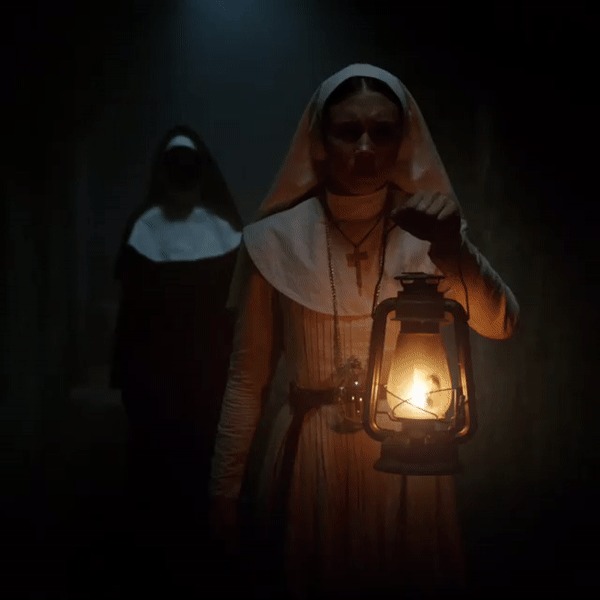
That’s why I’m here to contribute to the #MeToo movement, and take down the patriarchy one trope at a time.
Today’s post is going to take you through a rundown of women in the horror genre, how women have figured in the paranormal theories inspiring these films, and how The Nun is the feminist icon we should all stan this Halloween.
So, grab a crucifix, burn some popcorn in the microwave, and chuck on a white-purple-n-green sash.
Let’s get spooky.
How did horror films portray women before The Nun?
As made evident by recent allegations, convictions, and cases – or just, like, watching a film – you can see that most of the film industry has been stuck in the wrong century.
And it’s not difficult to decipher that horror films have featured prominent tropes that support this.
Their distressed and weak women are the fundamental building blocks to misogyny.
It’s even been traced to specific horror film genres, styles, and characters!

Take slasher films:
From The Texas Chainsaw Massacre to fellow horror icon Carrie, these films have been traced back to the good ol’ American Dream. The middle-class aspirations reflected across society and into the films that furthered the negative – but mainly weak – images of women.
And these images became some of the most striking tropes in horror films.
The first of these tropes is the Final Girl.
She’s pure, and she’s untouched.
She doesn’t smoke, doesn’t drink, and most definitely doesn’t die.
The female virgin is the first character to see that things aren’t quite right, and she’s the only one to see us through the plot and finally kill that monster.
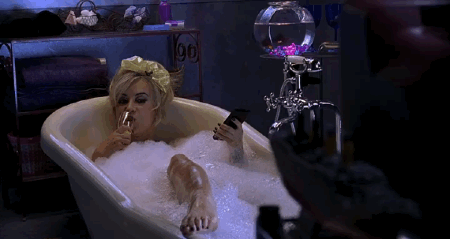
(And yes, that vague plot works for basically every horror film ever…)
The Final Girl gets her name by taking on male characteristics, ditching her femininity and finally taking on the monster!
With her new-found masculinity, she can survive, and live up to her name.
But it’s only when she conquers the monster by turning her back on femininity that she embodies the next trope on our list:
The Female Monster.
One of the main factors reinforcing misogyny is the sexualisation of the female body.
And in case you hadn’t noticed, the oversexualisation of women is central to most horror films.
From awkward sex scenes, to the troubling portrayals of high school girls, women’s bodies have undergone their maximum objectification in the horror industry.
But what I want to talk about here is the female monster.
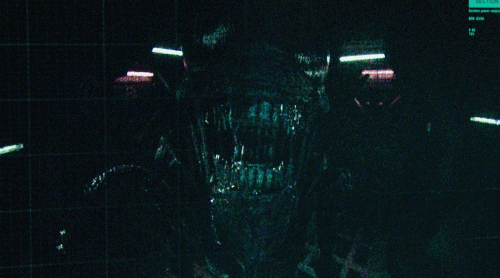
Her body is not used for a picture-perfect DVD-cover shot, and it’s not put in slow-mo for a cringey running shot. Instead, horror films consider the female monster’s body as abject.
By bringing together the physical processes associated with women – which include menstruation and giving birth – the monster is constructed.
Just think of the obsession with the ‘hysterical woman’! The horror film industry has spent most of its years evoking the image of the ‘triggered woman.’
Thus, the female monster is based on physical disgust as well as the masochism she seeks – this is what drives a wedge between male and female villains:
Male monsters commit sadistic acts in the aim of self-mutilation. Female monsters on the other hand commit such acts to avenge the abuse carried by those around them.
Take I Spit On Your Grave or Carrie.
Both iconic horror flicks, both iconic examples of the female monster:
Carrie avenges her high school class and spends most of the plot covered in pigs’ blood, echoing her original menstrual difficulties; and Jennifer is sported on the film posters as wearing little clothing and smeared in a sexy array of mud from which she seeks revenge on her rapists.
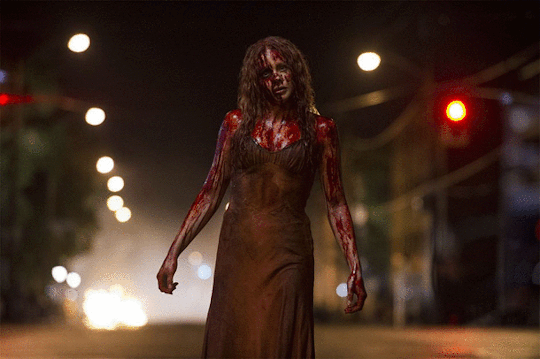
Evidently this fulfils the role of the ‘male gaze’ which never falls short of most genres, unfortunately.
But within this, we have to consider the key role of menstruation.
Think back to the opening scene of Carrie.
No, not the weird soapy boob bit, the bit where she starts bleeding from the vagina.
(Which BTW isnt how periods work in the shower.)
It is actually believed that the female monster can be traced to the bleeding vagina thing.
Basically, when a girl hits puberty, she immediately becomes a monstrous being, and follows another step to becoming the ‘female monster’.
Following on from this obsession with disgusting things and women, we come to the perverted mix of sex and violence that has contaminated the genre.
Take The Chase scene:
Think of the ripped clothes, the dim-yet-sultry lighting, and the dewy skin; it’s a live pop performance away from a Victoria’s Secret Runway!
Female victims are believed to be captured in this confused state of a sexualised body image and violence-infused distressed 5 times longer than their male-colleagues.
And once again we return to the Final Girl, and her survival of The Chase.
The final major trope we need to consider is that of the possessed young girl.
Affirming its role as a major horror theme, the innocent young girl is often laden with creepy vibes as the dangerous and demonic spirits take control of the events of the film through her.

And it’s possibly because an all-powerful demon strikes such a contrast with the innocent young girl.
Consider one of the most famous horror films to grace the industry - The Exorcist.
The all-swearing, sexually-harassing, self-mutilating, all-knowing possessed Reagan challenges every component of being a ‘young girl’.
And this is the mirror image of the role of women within paranormal theories.
What’s the role of women in paranormal theories?
Theories regarding the paranormal obviously are entrenched in past beliefs regarding the societal roles of the sexes.
The supernatural was their science, and their religion their law!
But I’m not here to list all the supernatural theories that specify the differences between the genders.
I���m going to focus on one key piece of theory that echoes out into the horror movie industry:
And it’s how women and young girls in particular were deemed more likely to be possessed by spirits.
To skip out the confusing bits, this is what you have to know: as women and young girls are considered weaker, they are more ‘open’ to allowing in spirits and demons, and thus being possessed.
Obviously, this has made its way into pop culture.
But beyond the creepy possessed girl is the gender roles entrenched within the theory of possession.
If we compare European and African sentiments regarding possessed women, we can see that each specific country upholds a specific focus on women.
For example, several African countries focused upon how possessed women were more likely to leverage their condition in order to gain luxury items.
Some belief systems even classified that certain spirits could possess only women!
Clearly, women’s relationship with the paranormal has been painful to say the least.
And this is what makes The Nun the feminist icon that it is; it breaks down both the horror film-specific misogyny, and the misogyny inherent in paranormal theories.
Here’s how.
Why we should stan The Nun. Like, right now.
Upon The Nun’s release, it was branded a basic-bitch horror film.
It had endless jump-scares, a silly monster, and a forced plot used to duct-tape the films together. But underneath that surface we see a feminist icon disguised as a basic-bitch horror film.
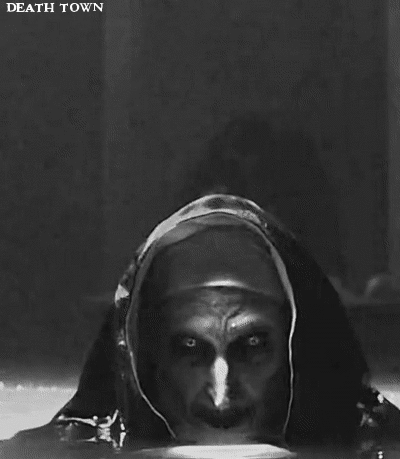
*I am about to discuss key plot points from The Nun - this is your spoiler alert!*
The film starts with the Vatican responding to claims of strange activity in an abbey (that just so happens to house the demonic Nun, Valak). A group of priests and other clergymen dictate the situation, and seemingly control the narrative.
And it’s this masculine and priest-based control that sticks to traditional films.
So, when the dream-team sent to investigate Valak is finalised, the move against the traditional tide surges.
We see the emergence of a new dynamic between the main characters – Frenchie, Sister Irene, and the Priest.
And it’s all down to the young soon-to-be-nun, Irene, who join forces with the priest to seek out the activity, and complete god’s mission on earth. Clearly – as she is a virgin and embodies the purity we expect from the trope – she is the Final Girl.
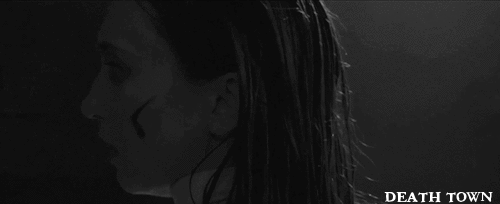
But she doesn’t swan around being cute and dorky. She doesn’t even end the film with a succinct rescue!
She expresses her own agency by placing power in her faith, and in her desire to be a Nun, which is the thing that fulfils her identity as the Final Girl.
Indeed, it is her visions that lead them to victory over the demon, Valak.
Her own faith which celebrates her virginity is what saves them!
She also demonstrates her own agency by going against the church’s teaching on dinosaurs, and when they embark on the journey to the abbey and deal with the problems there, she isn’t just a sidekick.
Irene stands together with the priest, and brings her own set of knowledge to the table. Sure, the priest embodies his own set of wisdom from his previous experience of exorcisms and his position in the church.
But it’s the collaboration between the two - rather than a well-timed rescue - that really emphasises her power.
To complete this, upon meeting Frenchie – who immediately smells of a love interest the second we see the curly mop of hair and hear that accent – he makes a pass at Irene. He is quickly shot down, and from there we see no forced love story set to entice the female audience.
Sister Irene is a new wave of ideas and spirituality that manifest even more promisingly in her visions. She represents feminism - this is key to my next point.
Now, I’m gonna be honest – I get confused here.
A key premise of the film is that Irene has visions. And one of these is when her and a group of nuns are praying to seal Valak in the abbey, and keep the demon at bay.
I’m not sure if all of the nuns we see throughout the film that were at the Abbey were real or just a part of these visions.
But we do know that at least one of these nuns existed - Victoria.
She was the nun that committed suicide at the beginning of the film.
It is later confirmed in the film that Victoria committed suicide to prevent Valak from possessing her body and escaping out of the Abbey. And alongside this, we see the constant battle and bravery of the nuns in keeping Valak at bay!
Just before Victoria commits suicide, another nun takes on the challenge of facing Valak, and attempts to seal the demon using the relic that we later find out is the blood of Christ.
Consistently we see nuns be badass.

We see meek and mild women, drenched in Final Girl tropes throwing off the shackles of patriarchy and reclaiming not just their right to their sexuality and womanhood, but also to defending their faith and what they believe in!
What defines them is no longer their bodies, it’s their beliefs.
This is made dually effective by the comparison between their consistent efforts to keep Valak at bay and the initial efforts of the crusaders. The nuns mirror the efforts of actual knights, and use their agency and power of being nuns to do so.
We then come to the Nun - Valak - herself.
The monster titling the film ties together the tropes of the female monster and the possessed girl, evoking the role of women in horror films for the last 100 years.
Nuns often fulfill a mothering image.
So – just like the innocent young girls that figures so prominently in films such as The Exorcist or The Exorcism of Emily Rose - the mocking of such an image by a demon incites the traditional approach we see in traditional horror films.
This is accentuated by her appearance.
Not far off the female monster, Valak is hag-like, stretching the perverted image of a woman by mocking a nun.
And Valak’s demise – which is brought about by the most badass scene ever – involves Irene spitting the blood of Christ in it’s face.
It is a true act of guts, grossness, and power.
It once again evokes the obsession with blood and the female monster splattered across previous horror films.
It truly brings together the main image I have concluded is core to this film:
The new, badass anti-patriarchy nuns who defy all Final Girl tropes and represent feminism defeat Valak who symbolises the past, misogynistic horror film tropes.
(Okay, fine, I doubt James Wan and the rest of the people working on this film had this message in mind.)
This is solidified by the final 2 scenes that end the flick:
We think that Valak is defeated and sealed away in the hellish crevice from whence it came.
But it is not.
Instead, it has possessed Frenchie, and this is who the Warrens find and exorcise. Footage of this then draws us back to the first film.
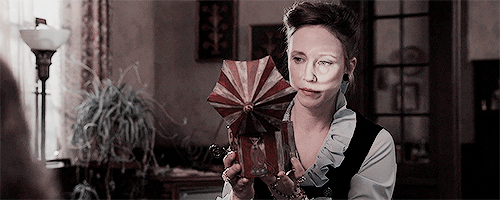
See, what matters here is that a man is possessed.
From the dozens of films I have sat through, I can think of few that actually involve men being possessed.
And that’s why I fucking love this movie:
The film ends by overturning misogyny, and it’s this ground-breaking male possession that kickstarts the whole Conjuring series!
They may not have defeated Valak, but they defeated the misogyny inherent in horror films.
***
This film will go down in the reviews section as a trope-filled-jumpscare-ridden-basic-bible-bitch- film.
But it’ll go down in history as a feminist icon.
(Well, to me, anyway.)
Now it’s time to hear what you think:
Do you think The Nun is the feminist icon we all need?
And are there any other feminist horror films that we gotta know about?
#halloween#halloween costumes#the nun#the nun 2018#the crooked man#true#true story#based on a true story#horror movies#horror film#halloween 2018#halloween 2019#the conjuring#the conjuring 2#ed and lorrain warren#horror movies 2018#horror movies 2019#the nun movie#the nun imbd#feminism#feminist#feminist films#metoo#me too movement#valak#carrie#the exorcist#paranormal#supernatural#haunted
32 notes
·
View notes
Text
Things You Need To Know About: The Forgotten Vows Verse
Tag: ~V: Forgotten Vows
Premise: Victor thought his adventures after the corpse bride incident were over – but, instead, they were just beginning. Torn from Victoria by the flight of her parents from the village, called insane by his own family and demon-possessed by Pastor Galswells, Victor began despairing of ever having a happy life again. And then he was shipped off to The Houndsditch Home For Wayward Youth – where he met a young lady by the name of Alice Liddell…
This AU is based around the idea “What if Victor’s parents, who missed out on the whole ‘raised the dead’ business, thought Victor had lost his mind when he told them about it -- and sent him to Dr. Bumby to be treated?” You can read the fanfics that make up the verse here: The Forgotten Vows Verse. But for the newbies:
The verse picks up literally seconds after Corpse Bride, with Victor seeing Victoria home after all the excitement. He drops her off at her door and goes back to his house to finally catch up on some much-needed sleep and await the arrival of his parents from wherever they've disappeared to. When they finally do return in the morning, Victor tells them the whole story --
And, to his shock, they don't believe him. Nell in particular thinks he's lost his mind and hallucinated the entire thing. Not even a visit from Pastor Galswells to declare Victor damned for "necromancy" and "consorting with demons" changes their minds. Worse yet, when they go to the Everglots, they find the mansion abandoned -- the viscounts apparently absconded sometime in the night with their daughter. Nell and William start a country-wide search, while at the same time bringing in psychiatrists to sort their son's head out. Victor gets along all right with the first, one Dr. Wilson, but Nell and William reject his diagnosis of Victor being just fine. The other psychiatrists are rather less understanding of Victor's insistence that the dead rose, especially since the villagers won't back him up anymore, and Victor takes to locking himself in his room whenever one comes around after the fourth one attempts electric shock therapy on him.
Eventually, the Everglots are located -- just in time for the Van Dorts to discover Victoria has married another man. Victoria explains to Victor that she'd thought he'd killed himself to follow Emily (based on a misinterpretation of a report on Galswell's rantings) and thus moved on. Victor is understanding but heartbroken. Briefly entertaining the idea of trying to find Emily in the Land of the Dead, he discards it when he realizes she really has moved on and falls into a deep funk -- one that isn't broken until his parents announce that they've finally found a psychiatrist that should be able to cure him.
One Dr. Angus Bumby of the Houndsditch Home in London.
Victor is taken to the Home, where he meets Dr. Bumby's star patient and dogsbody, Alice Liddell. Their initial meeting is a bit rough (with Alice taking brief offense to the existence of the Land of the Dead and the idea of the dead returning), but as the months go on, they become close friends, finding kindred spirits in each other. In fact, by September of 1875, Victor discovers that he's falling in love with her -- though he's deeply reluctant to admit it, given his past record with romance.
And then, on a routine trip to the chemist after her session with Dr. Bumby one day, Alice goes missing. Victor, frantic, starts pounding the pavement in search of her, egged on by an equally anxious Dr. Bumby. Despite receiving all sorts of disturbing reports on her behavior from various Whitechapel residents, he doesn't actually catch up with her until a fortnight later, saving her from her nanny's burning brothel on the Billingsgate docks (after first punching out the local pimp, Jack Splatter). After a brief incident with her family lawyer that leaves her locked up in the Bow Street cells overnight, Alice is finally able to tell him what's going on -- her childhood playland turned psychological fixer-upper, Wonderland, has called her back to deal with a new threat to its safety -- the Ruin. She's been wandering the streets in a hallucinatory daze as she slaughters her way through her imaginary enemies and tries to track down the source of the infestation. Victor is naturally worried over her mental health (as is she), but encourages her in her pursuit of the truth.
The pair get a month of quiet (relatively -- Victor finds himself tangling with Splatter again when the pimp comes seeking revenge) before Alice is decisively yanked back to her imaginary world, leaving an increasingly anxious and frustrated back on the hunt. While he reconnects with Victoria and her husband (in town to visit one of his friends), makes some friends on the police force, and recovers Alice's beloved rabbit toy, he does not find her no matter where he looks. A chance visit to Dr. Bumby's office to protest his parents authorizing "radical treatments" for him leads to him finding out something about the doctor, though --
Namely, that Houndsditch is in fact a front for a child prostitution ring, and that Bumby has plans to make Alice a star whore while using her himself.
Unfortunately, Bumby catches him when he tries to escape with the information, turning his worst fears against him and breaking him -- erasing all his memories and turning him into his slave Thirteen. Happily, Victor only spends a week in this state before Alice, having discovered the source of the Ruin is in fact the Wonderland counterpart of her own psychiatrist and thus realized Bumby's dark secrets -- not only is he selling the children as prostitutes, he is in fact the one who raped her sister and burned down her home to cover up the crime -- confronts Bumby at Moorgate Station and kills him by shoving him in front of a train. Victor, though freed from his control, spends the next month struggling to resist his "programming" and regain his memories -- which he finally does in epic fashion via a battle in his mind.
Most people would consider that more than enough adventure for one lifetime, but Victor and Alice aren't done yet. Befriending a local chemist who turns out to be an actual wizard, the pair descend into the Land of the Dead to catch up with Victor's friends and Alice's family (conveniently in the same place, now that Lizzie is dating Bonejangles), and enter Wonderland so Alice can show him around the place. The latter trip reveals that Victor's not quite free of Bumby's influence just yet, and a second trip into his mind results. After a few rough fights, Victor finally manages to push past his worries that he's weak and burdening everyone by not being able to just get over his time as Thirteen, and his fear that he's like Bumby because he's started looking at Alice in a rather less-than-innocent way. With Alice similarly in control of her residual guilt over the children and the fire, the two marry, and find themselves a house in Victoria's new home of Sandford.
Which turns out to be a magical hot spot. Seems like a truly quiet life isn't in the offing for them...but Victor's decided he really doesnt mind that much. After all, he could have lost so much more.
Be advised that this universe deals with some adult themes, including mentions of rape, sexual slavery, and child prostitution. I try to be discreet and not mention anything too horrible on-screen, nor should any actual rape scenes be played out here, but if you’re triggered by that sort of thing, these are not the fanfics or the verse for you!
This verse has four distinct time periods/locations that threads can be set in:
Beginner’s Houndsditch: Early April 1875 to mid October 1875 -- in story terms, “Finding You” and about two-thirds of “Forgetting You.” Victor's still relatively new to Houndsditch and Whitechapel in general, making friends with Alice and learning how to get along in a city so very different from his quiet hometown. Advice on how to survive in this kind of world would be welcome -- attempts to mug or proposition him, not so much.
Forgetting Is An Art: Early November 1875 to early December 1875 -- “Remembering You.” Bumby’s dead and Victor’s been freed from his control -- but his memories remain rather elusive. Could anyone please help him figure out just who he is, beyond Bumby’s “personal assistant?”
Expert’s Houndsditch: December 1875 to July 1876 -- around the time of “Fixing You.” Victor’s got his memory back, but he’s still dealing with some of the aftereffects of being Bumby’s “assistant.” Plus he’s not thrilled about still being in Whitechapel. If you’re looking for an angrier, more cynical Victor, this is your man. Just be careful if your intention is to call him names to rile him up.
We Are The Village Green Preservation Society: Post-July 1876 and post the main canon arc. Victor and Alice have escaped Houndsditch at last! Now they’re living in the quiet little town of Sandford -- which, as it turns out, is a very high-magic area. Enough so that sometimes, things, animals, and people come through from other places and times altogether. Victor found this out when he went out the nearby woods one day and came back with an alien mini-dragon bonded to him. He’s in a better place these days (comes from marrying the love of your life and getting out of a city you hate), and willing to give anyone a chance to at least talk. But if you have foul intentions, be warned -- he is never letting another Bumby into his life. If a time period is not specified for a thread, it’ll probably be set here, as it’s the easiest for introducing Victor to characters outside his natural time period and was the “era” I was basically playing him in on the old “Forgotten Vows” blog.
Common NPCs:
Alice Liddell (throughout)
The Houndsditch Orphans (Abigail, Elsie, Reginald/Reggie, Dennis, Charlie) (throughout)
Dr. Wilson (Forgetting Is An Art/Expert’s Houndsditch/We Are The Village Green Preservation Society)
Victoria Everglot White (Forgetting Is An Art/Expert’s Houndsditch/We Are The Village Green Preservation Society)
Christopher White (Forgetting Is An Art/Expert’s Houndsditch/We Are The Village Green Preservation Society)
June Thatcher (Forgetting Is An Art/Expert’s Houndsditch/We Are The Village Green Preservation Society)
Dr. Jeremiah Jack “J.J.” Fixxler (Expert’s Houndsditch/We Are The Village Green Preservation Society)
Bayard the husky (We Are The Village Green Preservation Society)
Splatter the black-and-white cat (We Are The Village Green Preservation Society)
Moonlight the silver Pernese fire lizard (We Are The Village Green Preservation Society)
Dr. Bumby (Beginner’s Houndsditch)
Shipping: Purely Victor/Alice. Pre-Bumby, he’s too anxious about the possibility of being rejected to consider any other advances; post-Bumby, his trauma has made him basically Alice-sexual. Other people making advances will be met with reactions ranging from polite refusal to a fist in the face, depending on time period and how the advances are phrased.
NPC Ships: Victoria Everglot/Christopher White
Important Facts:
Victor does not take being snuck up on or grabbed from behind well. Before Bumby, he’s just easily startled. After Bumby -- well, being grabbed that way brings up traumatic memories (particularly if you happen to touch his rear while doing so). In Forgetting Is An Art, Expert’s Houndsditch, or We Are The Village Green Preservation Society, doing so is basically going to get you elbowed somewhere as he tries to escape -- and he has pointy elbows.
Victor’s greatest fear is total darkness. He will not take well being trapped in a pitch-black room, and will do whatever he can to escape. Threats to blind him will be met with resistance to the point of violence, and I will not actually let anyone succeed in doing so. He’d snap within minutes.
Victor’s not fond of hypnosis, given that before Bumby’s mind-warping, he associated it with the psychiatrist being an ass and giving him headaches, and after -- well, he associates it with how the doctor made him his “personal assistant.” Anyone trying to put him into a trance is going to be met with a hell of a lot of resistance.
Victor has always been pretty protective of his loved ones, and is not afraid to throw down should you threaten them -- especially Alice. (Never mind Alice is perfectly capable of taking care of herself -- he’ll soften you up before letting her destroy you.)
On a slightly nicer note, Victor actually quite enjoys sparring with friends. A friendly fight with refreshments afterwards is fun and keeps him in shape for any real danger that comes along.
Victor has a distinct soft spot for children and will basically go into “father/big brother mode” the moment he sees them. He also doesn’t tolerate anyone trying to hurt kids, for obvious reasons. The same goes with animals, especially dogs.
Victor quite likes to cook and particularly enjoys baking. There’s a good chance a lot of my open starters will involve him making food and wanting to share it.
Victor loves animals and, by the time of We Are The Village Green Preservation Society, has three pets -- Bayard, a friendly and excitable grey and white husky; Splatter, a black and white cat so named because he looks like he was splattered with black paint (it wasn’t until later they remembered Jack); and Moonlight, a lazy but sweet-tempered fire lizard whose egg came through one of those magic portals and was found by Victor just in time for him to hatch and bond with the young man. Moonlight may seem like a rather odd outlier (especially since I also have an AU where fire lizards are just a fact of life due to an earlier surprise teleport from Pern to Earth), but -- well, he was Forgotten Vows’s pet first on the old blog, and I didn’t want to separate them. His noncanon color is actually a result of his being from the DW journal Nest O’Flitts, which makes posts in meme communities randomly giving out fire lizards in both canon and noncanon colors. It’s completely up to roll of the dice, and their roll for Victor landed him a silver. So yeah.
Victor knows magic! Or, at least, he does in Expert’s Houndsditch and We Are The Village Green Preservation Society, thanks to Dr. Fixxler. Victor and Alice become friends with him around the time of “Fixing You” and learn a few spells from him. Victor’s “signature” spell is Glowing Orb, which summons a small ball of light (gee, can’t imagine why he’d like that best). He also knows a healing/rejuvenation spell (Spring’s Breath), a summon-an-object-from-your-imagination spell (Imagination Into Reality), a send-messages-instantly-to-anyone spell (Write Across The Miles), a create-water-in-any-container spell (Nile’s Blessing), a cleaning spell (Scrub & Shine), a shield spell (Protection), and a enter-into-someone-else’s-mind spell (Travel Into Fantasy). NPC Alice’s spells include Imagination Into Reality, Travel Into Fantasy, Protection, and a natural affinity for a personal disguise spell called False Flesh (that’s my explanation for her gaining her Wonderland look in front of Bumby at the end of A:MR). Other spells may be added as time goes on!
This verse is open to everyone!
#~V: Forgotten Vows#~T: Beginner’s Houndsditch#~T: Forgetting Is An Art#~T: Expert’s Houndsditch#~T: We Are The Village Green Preservation Society#~C: Alice Liddell#~C: Victoria Everglot#~C: Christopher White#~C: Dr. Wilson#~C: Orphans#~C: Dr. Fixxler#~C: Dr. Bumby#~C: June Thatcher#~M: when he was a boy (headcanon)#~M: meanwhile in our reality (OOC)
4 notes
·
View notes